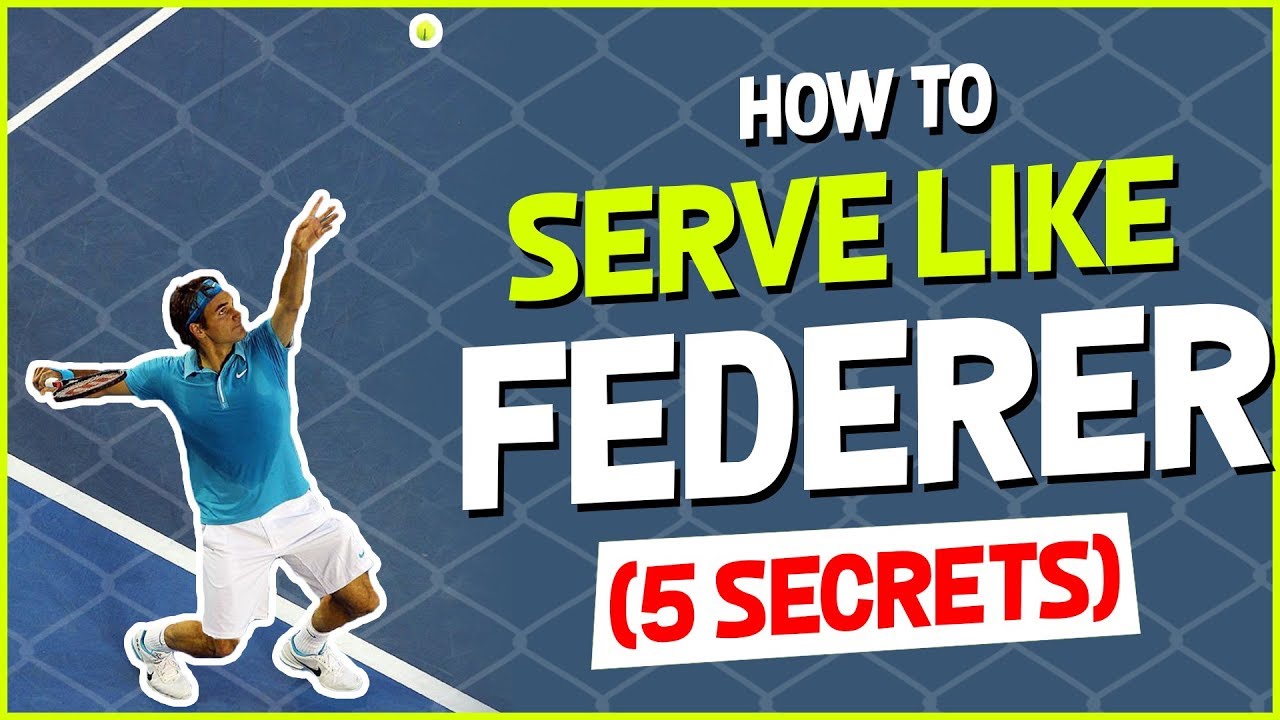
1. The Toss- This is probably the most under appreciated aspect of Roger’s serve, or any great server’s motion. But it’s absolutely critical that you get this right otherwise, it makes the serve really tough. To start, I recommend holding the ball with your fingertips, almost like you’re holding a cup of orange juice.. kinda like this. Now this is by no means the ONLY way to hold the tennis ball when it comes to tossing the ball, it’s just the way that has caused the least problems for me personally, it’s the way not all, but many of my students prefer and it CAN certainly work for you as well. Bottom line is, hold the ball in a way that allows you to release the ball in control, with little to no spin… and you’re in business.
The next part of the toss that is critical is the location of the toss. Now this should hinge initially on what kind of serve you’re hitting… if you’re a righty, roughly 12 o clock for a kick serve, 12:45 to 1:00 for a flat serve, and 1:15-1:30 for a slice serve. In all cases you want your toss slightly into the court and the MINIMUM height should be the height of your fully extended racket head at contact.
2. First Move- Step 2 is to make a very solid first move on your serve. If you watch Roger, he begins by actually coiling or turning his hips away from the court as he begins his tossing motion… and simultaneously begins by leading back with his right elbow. The coiling of the hips is key and I call this The Corkscrew Method… contrasted with the Squat and Thrust method which is when you just kind of squat down with no rotation. Reason this is important, is it’s going to help create more potential energy, winding your body into a tighter coil before you go to hit the ball so it’s less about muscling it and more about simply releasing that coil.
3. Wrist Position in Backswing- Step 3 is to make sure that during your backswing your palm stays down or rounded … right up until we get into the trophy position. This is key because it goes a long way towards eliminating the dreaded waiter’s serve which is when your wrist kind of flops open like a waiter holding a tray, which turns your serve into more of a push and robs it of power we don’t want that… Keeping your palm down or rounded is going to allow the racket drop to happen dynamically and naturally, which is a key component to Roger’s serve… and should be a key component to yours as well.
4. Pass through the trophy position- Step 4 to hitting your serve more like ROger Federer’s serve is to pass through the trophy position. Now, notice, Id din’t say GET INTO the trophy position. Because if you watch Roger Federer serve in real time. He’s never really in one position… he’s always flowing through the motion. That’s what makes it not only look so cool and effortless, but what makes it really efficient. But we DO want to know where this position is and we DO want to practice finding this position for ourselves particularly with shadow swings). So… here’s what the trophy position looks like, your knees are bent, your hips are rotated away from the court, yet sliding forward into the court your, hitting arm is comfortably away from the body… your hitting elbow is roughly in line with your hitting arm shoulder shoulder (which doesn’t look like it, because the shoulders are sloped, but it is) tossing arm is still up there almost like you’re shooting a bow and arrow up into the sky
5. Release- And step 5 to hitting your serve like Roger Federer is to have a full release. So, here we are in the trophy position, which we know is just a moment in time…and as we are passing through it, we’ve stored up all of this kinetic energy… and now we just need to let the rubber band go. So to do that, we’re going to push off the ground with our legs, rotate our hips forward into the court and throw the racket head up at the ball. This is a key step that most players may understand conceptually… but don’t actually do… you’re going to hit UP on the ball… this will give your ball spin, which will lift the ball up over the net, and pull the ball safely down into the court.

